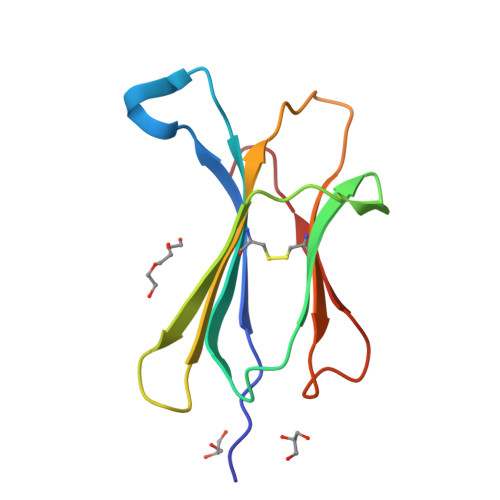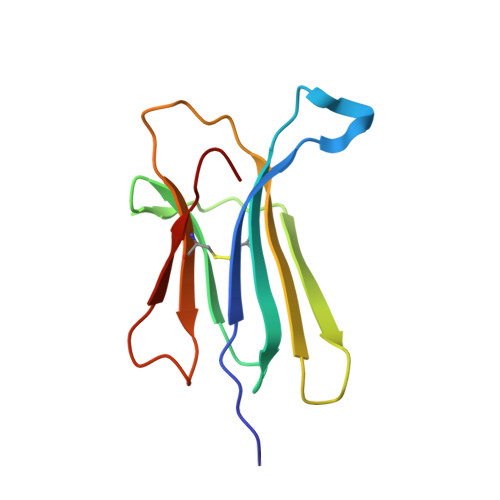The effect of mutation on an aggregation-prone protein: An in vivo, in vitro, and in silico analysis.
Guthertz, N., van der Kant, R., Martinez, R.M., Xu, Y., Trinh, C., Iorga, B.I., Rousseau, F., Schymkowitz, J., Brockwell, D.J., Radford, S.E.(2022) Proc Natl Acad Sci U S A 119: e2200468119-e2200468119
- PubMed: 35613051
- DOI: https://doi.org/10.1073/pnas.2200468119
- Primary Citation of Related Structures:
7NMC, 7NMO, 7NMR, 7NMT, 7NMV, 7NMY, 7NN5 - PubMed Abstract:
Aggregation of initially stably structured proteins is involved in more than 20 human amyloid diseases. Despite intense research, however, how this class of proteins assembles into amyloid fibrils remains poorly understood, principally because of the complex effects of amino acid substitutions on protein stability, solubility, and aggregation propensity. We address this question using β2-microglobulin (β2m) as a model system, focusing on D76N-β2m that is involved in hereditary amyloidosis. This amino acid substitution causes the aggregation-resilient wild-type protein to become highly aggregation prone in vitro, although the mechanism by which this occurs remained elusive. Here, we identify the residues key to protecting β2m from aggregation by coupling aggregation with antibiotic resistance in E. coli using a tripartite β-lactamase assay (TPBLA). By performing saturation mutagenesis at three different sites (D53X-, D76X-, and D98X-β2m) we show that residue 76 has a unique ability to drive β2m aggregation in vivo and in vitro. Using a randomly mutated D76N-β2m variant library, we show that all of the mutations found to improve protein behavior involve residues in a single aggregation-prone region (APR) (residues 60 to 66). Surprisingly, no correlation was found between protein stability and protein aggregation rate or yield, with several mutations in the APR decreasing aggregation without affecting stability. Together, the results demonstrate the power of the TPBLA to develop proteins that are resilient to aggregation and suggest a model for D76N-β2m aggregation involving the formation of long-range couplings between the APR and Asn76 in a nonnative state.
Organizational Affiliation:
Astbury Centre for Structural Molecular Biology, School of Molecular & Cellular Biology, Faculty of Biological Sciences, University of Leeds, Leeds LS2 9JT, United Kingdom.




















